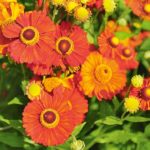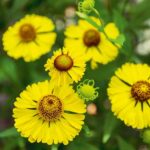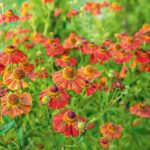7+ flowers to brighten the best days of the year
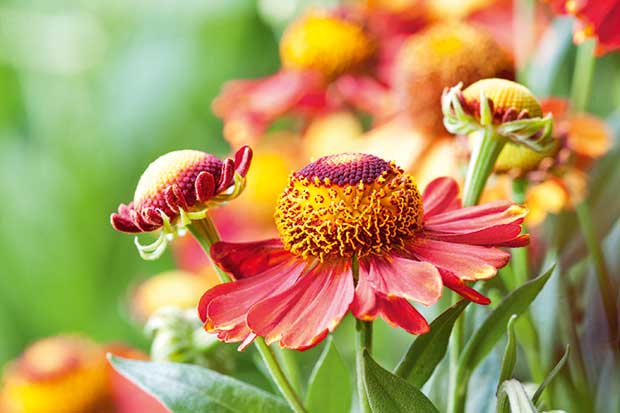
Helenium.
Late summer and early autumn can lack flowers, but a little planning now will see it bright and blooming.
Words: Jenny Somervell
One moment you’re enjoying a feast of summer flowers. The next minute, it looks like a flower thief has ransacked the garden. Where have all the flowers gone?
When we plant out in spring, we often don’t consider what the garden will look like in late summer and early autumn, when our plants run out of steam.
Yet, it’s the time we enjoy our garden most. Colours intensify as light levels drop, the strong summer heat abates, and it can be delightful to sit and mellow out among the flowers. If you have any!
Sadly, there are no miracle, long-flowering plants that can carry your garden from early summer to the end of autumn.
The good news is that planting a handful of late-summer-to-autumn flowering plants can bring you a lot of pleasure. It will also provide fodder for bees and other wildlife.
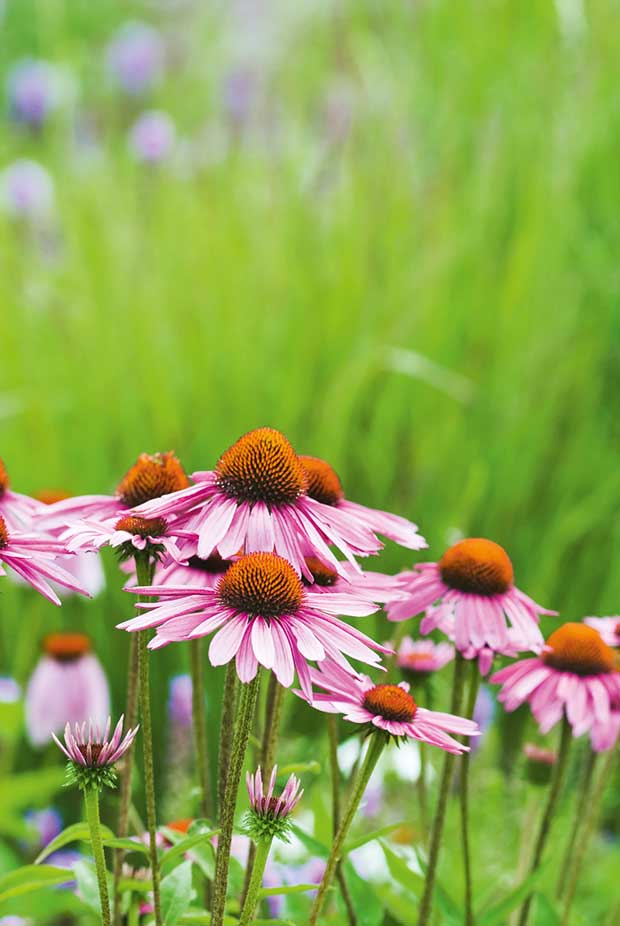
Echinacea.
Now is the time to get them into the ground. These are my suggestions for brighter autumn days.
BEE-LICIOUS HERBAL FLOWERS
Late summer and early autumn is when I remember why I grow salvias. They don’t mind the cooling temperatures and lower light levels. Many varieties continue to flower in my North Canterbury garden until mid-autumn or when hit by frost.
The salvia family
Sage (Salvia officinalis) is a popular herb, but under-rated as an ornamental flower. It is a worthy plant in any garden, even if you don’t eat it, with its purplish-blue, bee-attracting flowers, and pebble-grey foliage.
For year-round colour, there is the chartreuse-yellow golden sage (S. officinalis Aurea), and the dusky, plum-purple sage (S. officinalis purpurea).
But there is much more to salvias, the largest genus in the mint family, with roughly 900 species. Most ornamental varieties flower steadily through summer into autumn. They are relatively drought and heat-tolerant and include brilliantly-coloured flowers, from some of the truest blues and vibrant purples, to stunning reds, oranges and hot pinks.
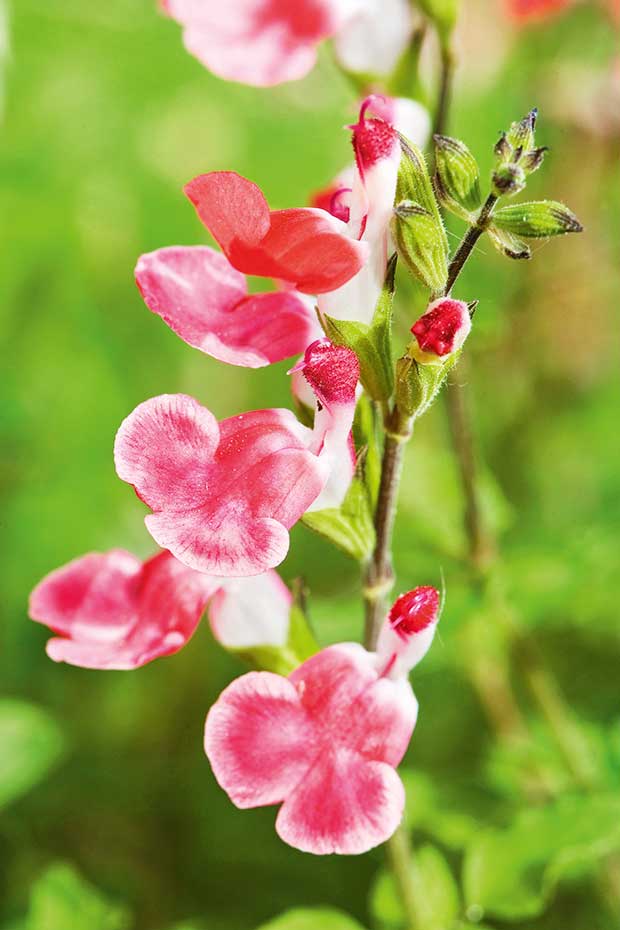
Salvia.
I like to have the purple-blue salvias alongside other blue-flowered perennials, mixed with pastel colours or crisp whites. For a hotter colour scheme, you could contrast them with bright yellows and gold.
Some of the most spectacular salvias come from Mexico, Central and South America: S. guaranticas, S. involucrata,
S. leucantha, S. Purple Majesty, and S. Indigo Spires.
If you’re in a cold area, you may lose them to frost, but they are so lovely, it’s worth trying.
Among the longest flowerers, in a multitude of colours, are cultivars of the twiggy shrub group, S. greggi which bloom from spring to autumn.
Many salvias have fragrant and/or striking foliage. The beautifully-textured S. argentea has silver leaves. The autumn-flowering pineapple sage (S. elegans) has a sweet pineapple scent.
Salvia flowers are rich in nectar, attracting and feeding bees and beneficial insects.
The wonder honey plant
Bees adore anise hyssop (Agastache foeniculum). I find them hardy and trouble-free plants.
The showy, whorled flowers appear without fuss, in mid-to-late summer. They are prolific and long-flowering, in a great range of pastel shades, from white, mauve-blue, and reddish-pink to salmon coral.
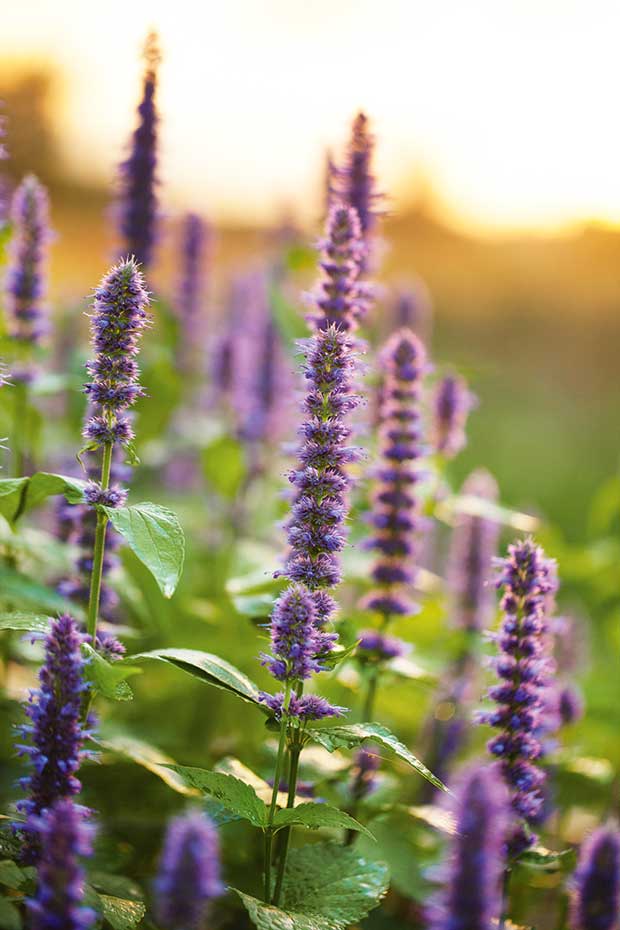
Anise hyssop.
The flowers are edible, and attractive if you put them in a vase. Cutting flowers can prolong flowering into autumn.
Anise hyssop varieties tolerate drought. My plants do well, even when out of the sprinkler’s range.
The plants form rounded bushes, and their anise-scented leaves seem to repel pests. Best of all, they don’t need dividing.
Bee balm
Bergamot (Monarda didyma, M. fistulosa) are show-offs, and bees love their shaggy, tubular flowers. The flowers come in intense colours, usually in mid-to-late summer. They can begin earlier in northern gardens and start and finish later in cooler areas.
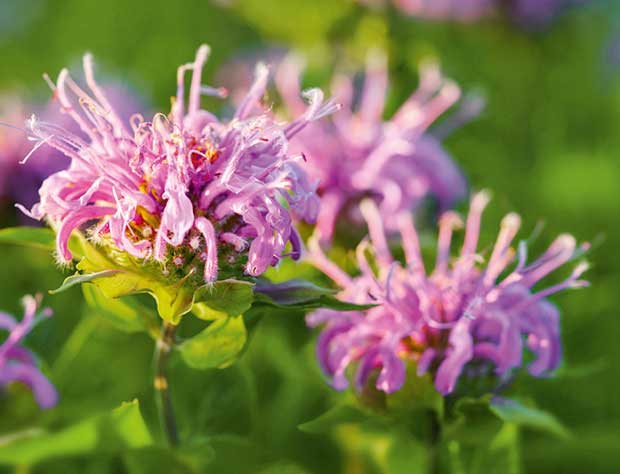
Bergamot.
Two of my favourite varieties are Gardenview Scarlet and Jacob Cline. These rhizomatous perennials will spread; give them space to romp. The shallow roots need a moist, well-drained soil.
Joe Pye weed
Eupatorium sp is a robust, tall plant that is perfect for the back of a garden bed. It makes an impressive sight when it flowers in late summer to mid-autumn.
Bees love the huge, domed heads of frothy, dusky-pink flowers. The attractive, buff-coloured seed heads that follow are also a great feature.
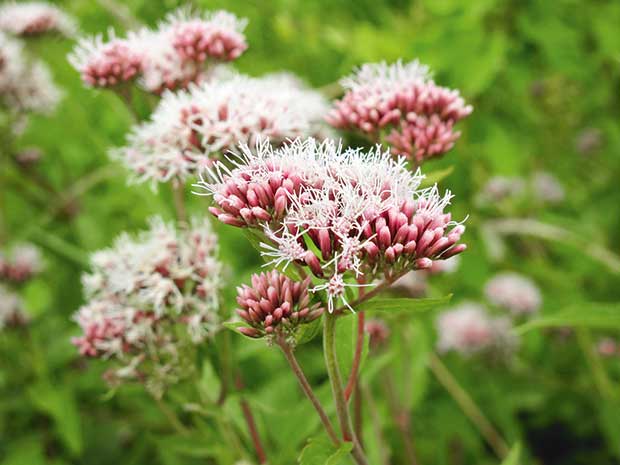
Joe Pye weed.
Although these plants are a bit greedy about space, I have never convinced myself to take ours out. The strong, vertical stems add architectural interest, they flower when other perennials are waning, and look great teamed with autumn-flowering sunflowers.
The species is tall, up to 3.5m. If you want something more compact, these varieties are shorter:
• Gateway, burgundy stems, 1.5-1.8m;
• Little Joe, 1.2-1.5m
• Baby Joe, 90cm-1.2m
Joe Pye likes moist, fertile soils and is lovely near the water’s edge, but I have found it a robust perennial, tolerating
dry periods and considerable neglect.
The undercover herb
You might know purple coneflower (Echinacea purpurea) as a herb, but it’s also a stunning, long-flowering, summer perennial.
The bright, luminescent flowers are probably the most photographed plant in my garden.
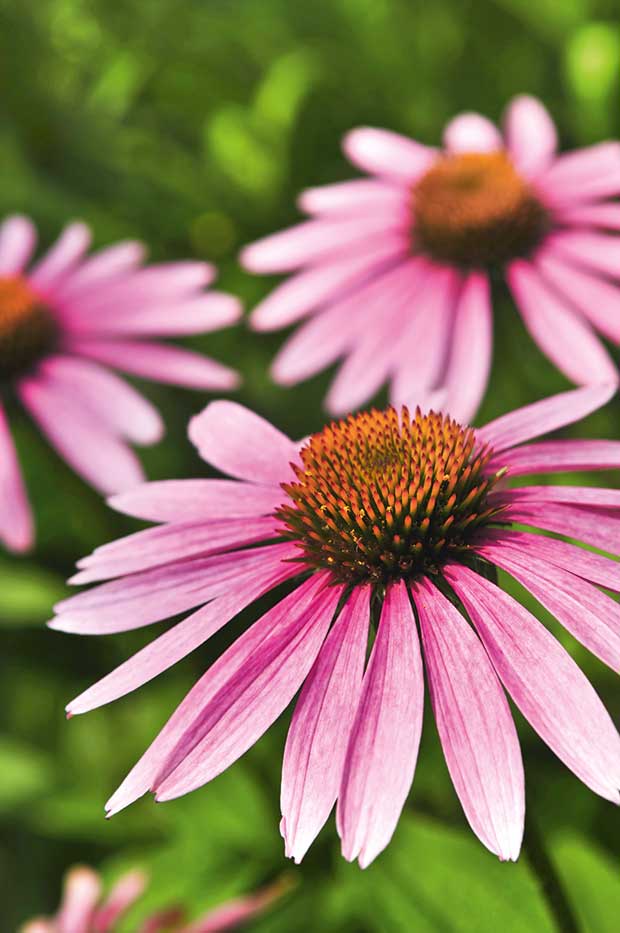
Echinacea.
Pink is the most common colour, but plants can throw every colour except true purples and blues. I love the pastel whites, and dramatic reds, corals and orange.
Echinacea looks great with all kinds of companion plants. You can combine them with mounded plants, dramatic spiky leaves, or plumed blooms. The bold flowers will be the stars of a garden bed of foliage plants, grasses or smaller daisies.
After flowering, the plants form interesting seed heads, which I usually leave on.
They occasionally self-seed in my garden, bringing me unexpected pleasure by popping up in gaps.
THE AUTUMN SUN FLOWERS
Yellow can be too bold for some gardeners in the height of summer, but in autumn it is delightful.
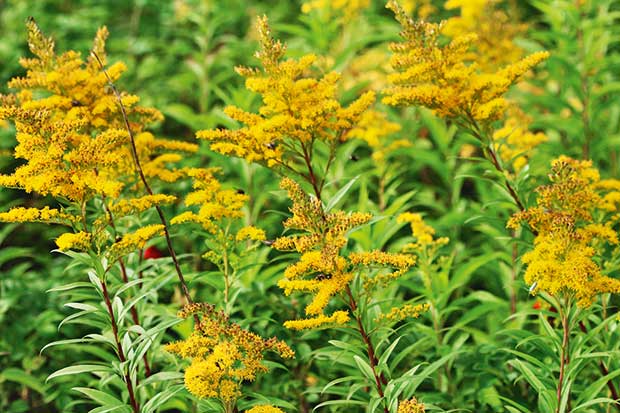
Goldenrod.
Goldenrod (Solidago sp) is named for its slender, upright rods adorned with feathery, golden-yellow flowers. The tall, weedy, original species (Solidago canadensis) can be invasive and should be avoided.
But the many attractive, compact hybrids are gorgeous when teamed with blue-purple flowers and grasses. I love Golden Baby (60cm) and Little Lemon (30-45cm). For a taller option, try Fireworks (80-100cm). H. autumnale Moerheim Beauty is a beautiful bronze-red, to 1m.
Helenium sp are American wildflowers that grow to 1m and flower during late summer and early autumn. The daisy-like flowers have distinctive spherical centres surrounded by gracefully drooping petals in brownish-yellow to mahogany shades, sometimes frilled. They are great for arrangments.
- Helenium.
- Helenium.
- Helenium.
Flowering will continue into late summer, even autumn if spent flowers are clipped. Heleniums prefer rich, fertile soils, don’t like to be too dry, and will grow in light shade.
7 GRASSES THAT GO WELL WITH LATE-SUMMER FLOWERS
1. Carex buchanii
2. Calamagrostis x acutiflora Karl Foerster
3. Deschampsia
4. Eragrostis
5. Molinia
6. Miscanthus Morning Light
7. Hakonechloa macra
JENNY’S TIPS TO A COLOURFUL LATE SUMMER FLOWER GARDEN
Balance variety with repetition.
• choose 3-5 perennials that enjoy the same growing conditions;
• focus on two or three main colours that will look good together in late summer-autumn;
• repeat the combination to fill the space, planting in groups of 3-5 plants;
• add variety with a flower in a contrasting colour, shape or height, eg contrast bold daisies with brushy spikes of grasses
• test your arrangements by laying out the potted plants and moving them around;
• allow room for perennials to fill out – they will always spread.
7 LATE SEASON FLOWERING PERENNIALS AT A GLANCE
Flower: Goldenrod (Solidago sp)
Colour: Lemon-yellow to golden yellow
Height: 60cm – 2m
Site: Full sun to light shade; well-drained soil
Great companions: Purple-foliaged sedums and Heuchera, Echinacea, Boltonia, Rudbeckia, Helenium, Eupatorium, Japanese anemone, ornamental grasses
Flower: Joe Pye (Eupatorium purpurem)
Colour: Dusky-pink Seed heads: buff-brown
Height: 60cm – 2.4m
Site: Average to moist soil, prefers moist
Great companions: Solidago, Helenium, Echinacea, Rudbeckia, Boltonia, Japanese anemone, Asiatic lilies, ornamental grasses
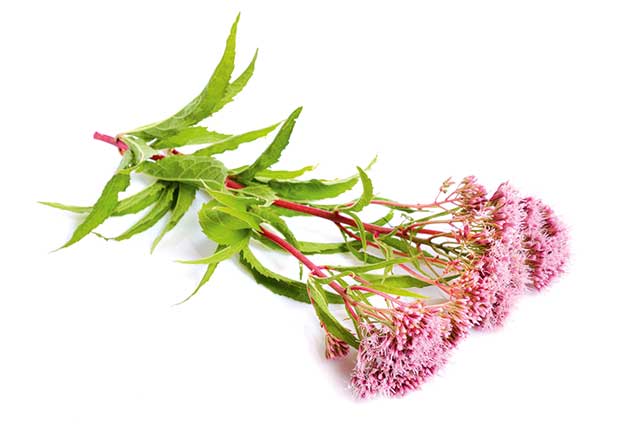
Joe Pye.
Flower: Bergamot varieties (Monarda sp)
Colour: Scarlet red, purple, pink, white
Height: 60 – 120cm
Site: Sun or shade; moist, well-drained soil
Great companions: Agastache, Echinacea, Helenium, Rudbeackia, Salvia, Leucanthemum, perennial geraniums and Lobelia, Lysimachia clethroides
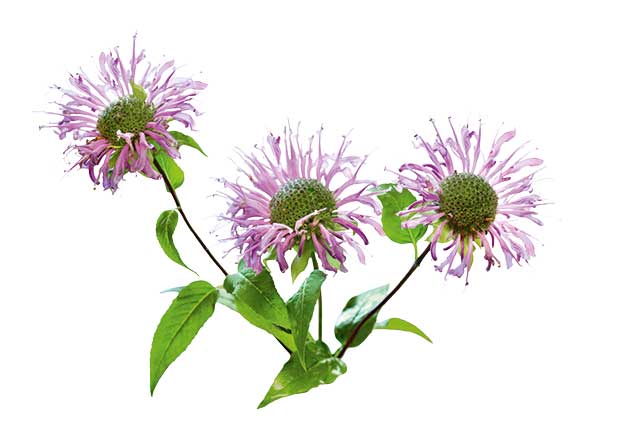
Bergamot.
Flower: Helenium
Colour: Yellow to reddish-orange to deep red
Height: 30cm – 1.5m
Site: Sun to light shade; rich fertile soil
Great companions: Agastache, Monarda, Solidago, Eupatorium, Rudbeckia, Salvia, Helianthus, Echinacea, Kniphofia
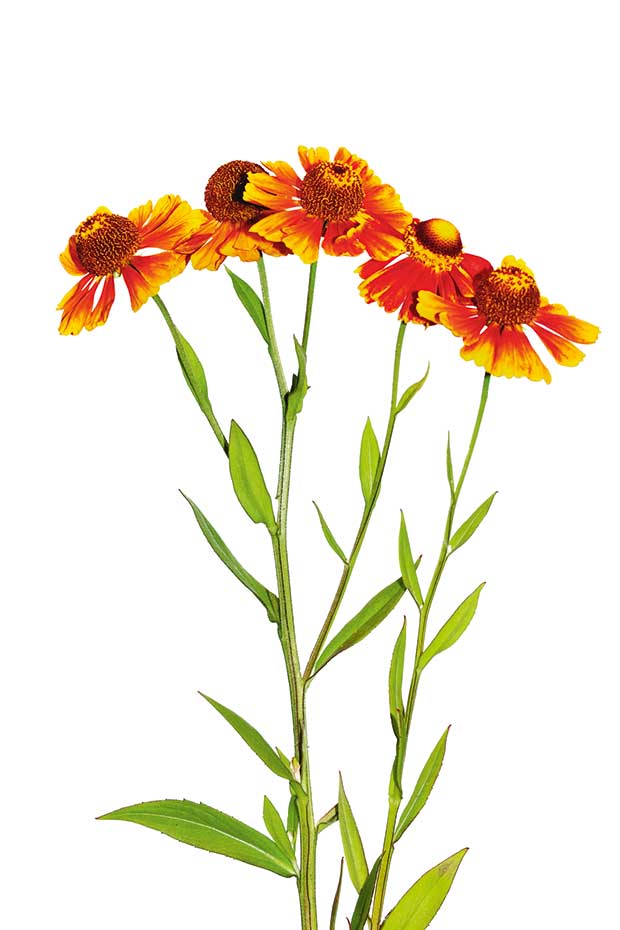
Helenium.
Flower: Echinacea purpurea
Colour: White, pinks, coral reds, oranges, yellow
Height: 45cm – 1.2m
Site: Full sun to light shade; average well-drained soil
Great companions: Asiatic lilies, Agastache, Echinops, Kniphofia, Achillea, Penstemon, Monarda, Salvia, other daisies
Flower: Agastache
Colour: White, pink, coral to red Foliage: yellow-green
Height: 30cm -90cm
Site: Full sun; average to dry, well-drained soil
Great companions: Salvia, Echinops, Helenium, Eupatorium, Achillea, Kniphofia, Phlomis, Penstemon, Echinacea, Monarda, Hemerocallis, Liatris
Flower: Salvia
Colour: Blue, purples, reds, oranges, pinks Foliage: golden, purple, silver
Height: 30cm – 1.5m
Site: Well-drained soil; sun to light shade
Great companions: Echinops, Phlomis, Helenium, Rudbeckia, Kniphofia, Achillea, Purple Heuchera, lavenders, ornamental grasses
Love this story? Subscribe now!
 This article first appeared in NZ Lifestyle Block Magazine.
This article first appeared in NZ Lifestyle Block Magazine.
